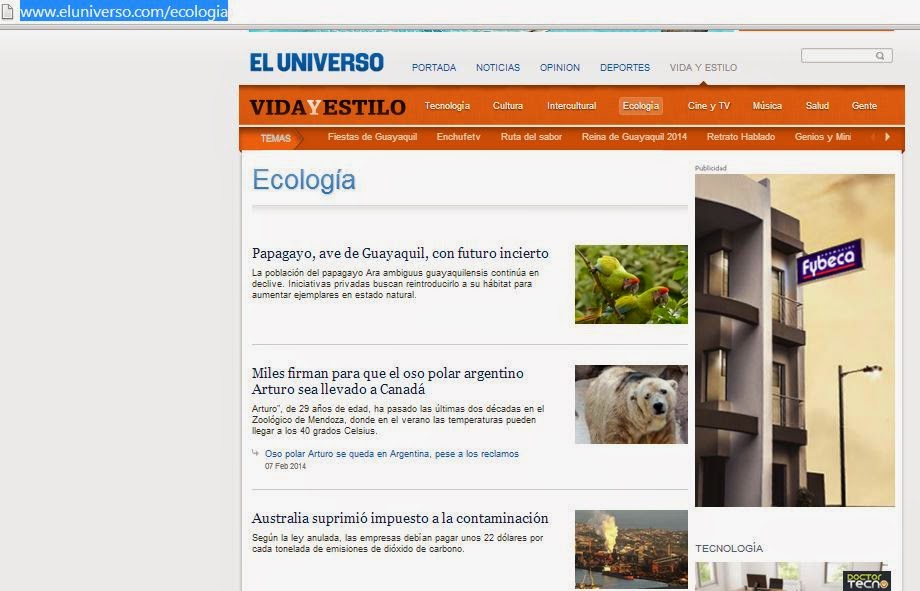Sunday, July 27, 2014
While walking through patches of dry forest in Guayaquil in the high and
deep part of the Cordillera Chongon-Colonche and let a canoe lead you on the
calm current of one of the estuaries of the estero Salado that coexist with
mangrove forest, Nancy Hilgert and Eric Horstman not only remember how these
ecosystems were when they arrived in the city 38 and 24 years ago respectively,
they also expound measures that they consider if applied could save these areas.
They are familiar with the howl of monkeys that from a distance announce
that the dry forest is their home, with the crackling of the large maroon
colored leaves that every six months the trees of this ecosystem drop to
survive the dry season, as well as the smells, somewhat rotting of the
saltwater estuary.
Although they weren´t born in Guayaquil – Eric is American and Nancy was
born in Peru but became a naturalized Ecuadorian, have dedicated themselves to
the conservation of these natural areas, Horstman the dry forest through the
Pro-Forest Foundation that administers Cerro Blanco and Hilgert both dry forest
and mangroves from a professorship, diverse NGO´s and public appointments.
This newspaper invited them to traverse these natural areas in order to
evaluate them. In the visits proposals
came out to restore the areas, which according to Hilgert ¨is a necessity to improve the quality of
life of Ecuadorians¨. This was said
while the canoe advanced through the estuary bordered by mangroves where
cormorants, mangrove warblers and herons are seen.
Both propose connecting the protected forests that have become isolated
in the middle of the city and to do that they propose options including canopy
bridges (connecting portions of the forest through the tree canopy),
subterranean tunnels so that terrestrial fauna can move through and regenerate
zones that make up ecological corridors.
One is connecting the Cerro Blanco, Papagayo de Guayaquil, La Prosperina
and Cerro Paraiso Protected Forests with the Cordillera Chongon-Colonche.
Another possible connection they say is to integrate what remains of
Cerro Colorado where the botanical garden functions with Los Samanes National
Recreation Area. This could be achieved
through reforesting a parcel that borders the Los Geranios housing development.
An action that could be applied for the conservation of both ecosystems
is reforestation or ¨restoration¨, as Horstman prefers to call it.
This forester says that in the case of dry forest, reforestation could
be done with introduced species such as eucalyptus and teak, but restoration
requires instead, endemic species such as pigio, ceibo, Amarillo and
cocobolo. With this, what is returned to
the city is what was formerly found there, which was cut down to drive urban
development.
As for the conservation of the mangrove forest, Hilgert sustains that
the current environmental legislation must be reformed to establish permissible
limits to the discharges of residual waters (sewage) to bodies of water, which
currently does not establish quantities (volume of discharges).
On this point, both agree that closing ¨the faucets of contamination¨
the estero Salado receives, the mangrove forests can be saved.
According to Horstman, restoration can also be done on adjacent lands to
the mangroves to extend them and on the higher land plant dry forest to re
establish the connectivity that once existed between the two areas.
In Puerto Hondo, he says trees such as pechiche have been seen to extend
down to the waters edge, which means that dry forest once was found down to the
edge of the mangroves.
http://www.eluniverso.com/noticias/2014/07/27/nota/3282016/propuestas-verdes-favor-ciudad?&utm_source=facebook&utm_medium=social-media&utm_campaign=addtoany



